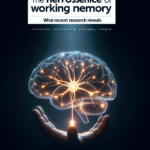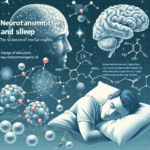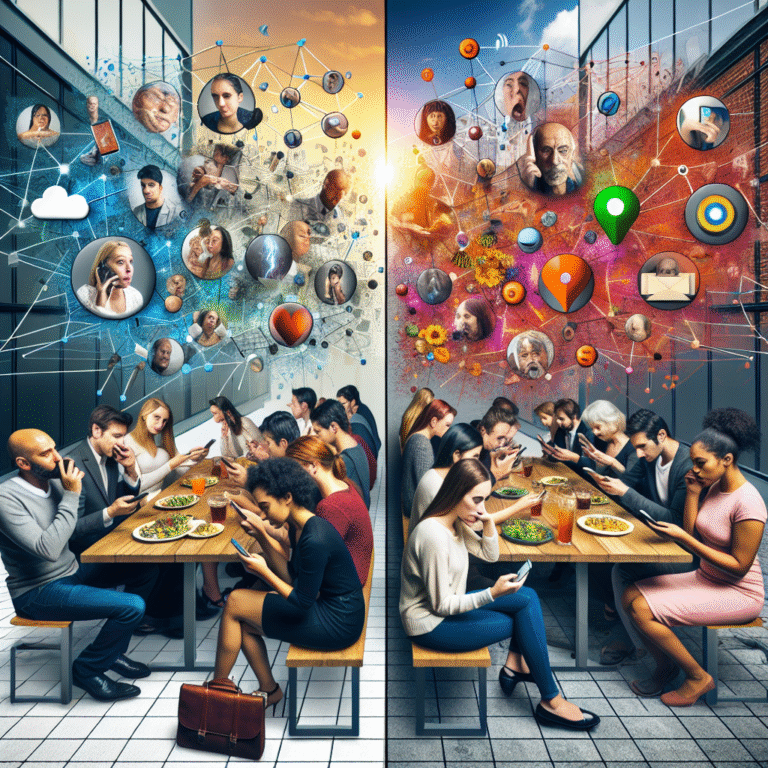
Introduction
In an age where technology mediates so much of our communication, understanding the intricacies of human interaction has never been more crucial. Connecting Minds: How Social Neuroscience Unveils the Mystery of Human Interaction delves into the fascinating intersection of brain science and our social behaviors. By examining how our brains function during social interactions, we can unlock the fundamental ways we connect with others, paving the way for better relationships in our personal and professional lives.
Whether it’s a smile exchanged with a stranger or a heartfelt conversation with a close friend, these moments reflect a complex dance of neurobiological activity. In this article, we will explore groundbreaking research in social neuroscience, providing insights through data, case studies, and practical implications designed to enhance our social skills.
Understanding Social Neuroscience
What is Social Neuroscience?
Social neuroscience is a field that investigates the biological basis of social interactions. It blends psychology and neuroscience to study how our brain structures and functions contribute to social behavior. By using techniques such as neuroimaging, researchers can observe how different areas of the brain activate during social tasks, allowing us to better understand empathy, attachment, and even conflict.
Key Areas of Research
- Empathy: How the brain recognizes and responds to the feelings of others.
- Group Dynamics: Investigating how individuals behave within group settings.
- Social Cognition: Exploring how we perceive and interpret social information.
The Neuroscience of Empathy: A Case Study
Consider a study conducted by researchers at the University of California, Los Angeles (UCLA), that utilized fMRI technology to investigate the brain’s response to empathy. Participants were shown videos of people suffering from pain. The researchers found that specific brain regions associated with pain perception, such as the anterior insula, were activated not only when participants experienced pain themselves but also when they observed someone else experiencing it.
Analysis
This study exemplifies how Connecting Minds: How Social Neuroscience Unveils the Mystery of Human Interaction can transform our understanding of empathy. It highlights that our ability to connect with others on an emotional level is deeply rooted in our biology, emphasizing the importance of neurobiological responses in social contexts.
The Role of Mirror Neurons
What are Mirror Neurons?
Discovered in primates, mirror neurons are an exciting and groundbreaking discovery in social neuroscience. These neurons fire both when an individual performs an action and when they observe that action performed by someone else. This phenomenon offers insights into our ability to empathize and connect with others.
Implications for Social Learning
Mirror neurons provide a biological basis for imitation, a crucial component of social learning. Children observe and mimic behaviors, which is fundamental for cultural transmission and developing social skills.
A Case Study: Learning Through Imitation
Research published in the journal Science established that infants demonstrate increased brain activity in mirror neuron areas when they watched adults perform tasks. This finding suggests that even at a young age, humans are wired to learn by observing others, forming the basis for social interaction.
Analysis
This case supports the notion articulated in Connecting Minds: How Social Neuroscience Unveils the Mystery of Human Interaction that understanding the brain’s wiring can fortify our social dynamics. By fostering environments where positive behaviors are modeled, we can cultivate strong interpersonal relationships.
Trust and Connection
The Neuroscience of Trust
Trust is a cornerstone of social interaction. Neuroscientific studies have shown that the release of oxytocin, often called the "bonding hormone," plays a significant role in the development of trust. Elevated levels of oxytocin facilitate social bonding and connection.
Real-World Application
Understanding how trust functions biologically can inform various settings, from clinical practices to corporate environments. For example, leaders who recognize the importance of trust can foster more cohesive teams by creating supportive environments.
Case Study: Oxytocin and Social Bonds
A well-cited study in Nature demonstrated that participants who received oxytocin intranasally showed increased trust toward strangers in a financial game. Those treated with oxytocin were more likely to share money and engage collaboratively.
Analysis
This reinforces the idea that Connecting Minds: How Social Neuroscience Unveils the Mystery of Human Interaction is not just theoretical; it has profound implications for our relationships with others. By understanding the neurobiology of trust, we can actively work to bolster trust in our communities.
Emotional Contagion and Social Connections
What is Emotional Contagion?
Emotional contagion refers to the phenomenon where individuals automatically mimic the emotions and behaviors of others. It has significant implications for how we interact socially and how emotions can spread within groups.
The Neuroscience Behind It
Research suggests that our mirror neuron system plays a critical role in emotional contagion. When we observe someone displaying an emotion, such as happiness or sadness, we may experience similar feelings as a result of our brain’s mirroring activity.
Case Study: The Impact of Group Emotions
A study in Psychological Science explored how collective emotions within groups can influence individual behavior. The research demonstrated that when a group exhibited positive emotions, individual members were more likely to embody those emotions, enhancing group cohesion.
Analysis
This aligns with Connecting Minds: How Social Neuroscience Unveils the Mystery of Human Interaction, highlighting that our emotional states are interconnected. Understanding emotional contagion allows us to foster positive interactions that enhance community and collaboration.
Enhancing Communication Through Neuroscience
The Language of the Brain
Effective communication relies on more than words; it’s about the neural processes that occur as we interact. Social neuroscience reveals that understanding our neural responses can significantly enhance our communication skills.
Active Listening: A Neurobiological Perspective
Neuroscience suggests that active listening activates brain areas associated with empathy and social understanding. By improving these skills, we can cultivate deeper, more meaningful connections.
Case Study: Improving Relationships
A program designed for couples aimed at enhancing active listening skills demonstrated that participants who engaged in active listening exercises reported higher relationship satisfaction. Neuroimaging showed increased activation in empathy-related areas of the brain.
Analysis
This study underscores the potential of Connecting Minds: How Social Neuroscience Unveils the Mystery of Human Interaction to enrich our personal lives. When we actively listen, we not only improve our relationships but also engage critical neural pathways that reinforce social bonding.
Challenges in Social Interaction
The Impact of Technology
While technology has revolutionized communication, it has also diminished face-to-face interactions, leading to potential social isolation. Social neuroscience helps us understand these challenges and how to address them effectively.
Navigating Digital Communication
Online interactions often lack the nuanced emotional cues that facilitate rapport. Understanding the brain’s expectations in social contexts can help us adjust our communication strategies effectively.
Balancing In-Person and Digital Interactions
Maintaining a balance between in-person and digital interactions is crucial for healthy social connections. Research indicates that the benefits of face-to-face communication include richer emotional exchanges, which can’t be fully replicated through screens.
Conclusion
Understanding the science behind human interactions through Connecting Minds: How Social Neuroscience Unveils the Mystery of Human Interaction opens up a world of possibilities. From empathy and trust to emotional contagion and communication skills, social neuroscience provides valuable insights into the dynamics of our relationships.
The take-home message is clear: our connections are inherently tied to the biology of our brains. By leveraging this knowledge, we can deepen our relationships and foster healthier, more meaningful social interactions. As we navigate an increasingly complex social landscape, a commitment to understanding and applying these insights will enhance our ability to connect with others profoundly.
FAQs
1. How does social neuroscience help in understanding our interactions?
Social neuroscience examines the neurobiological processes involved in social behaviors, providing insights into empathy, trust, and group dynamics.
2. What role do mirror neurons play in social interaction?
Mirror neurons are responsible for mirroring the actions and emotions of others, facilitating empathy and social learning.
3. How can understanding trust enhance workplace relationships?
Recognizing the biological basis of trust, such as the role of oxytocin, allows leaders to create supportive environments that foster collaboration and strong teamwork.
4. What is emotional contagion, and why is it important?
Emotional contagion is the process through which individuals mimic the emotions of others, impacting group dynamics and social cohesion.
5. How can I improve my communication skills based on neuroscience?
Enhancing active listening skills and being aware of the emotional cues in your interactions can significantly improve your communication and relationship quality.
In a world that is constantly evolving, understanding the foundational science behind human interaction provides not only clarity but also actionable pathways to create lasting, meaningful connections.

















